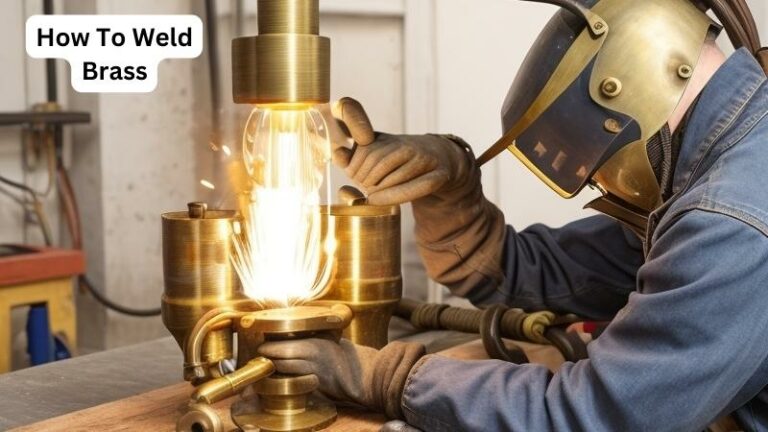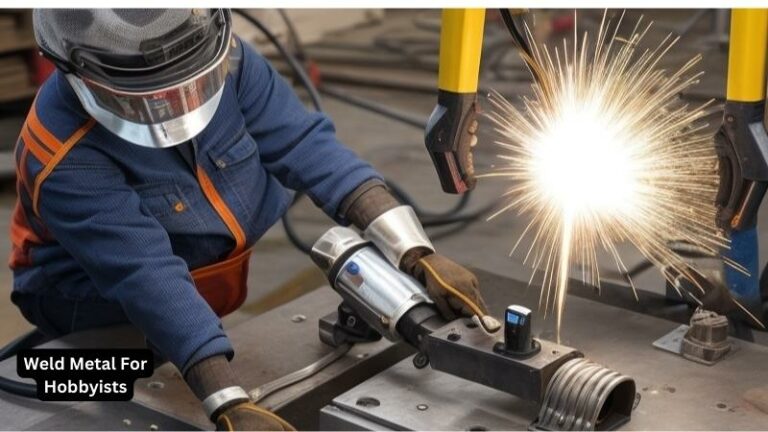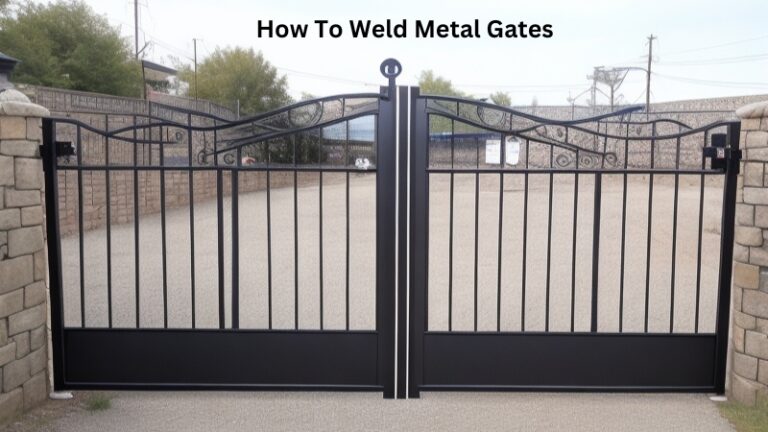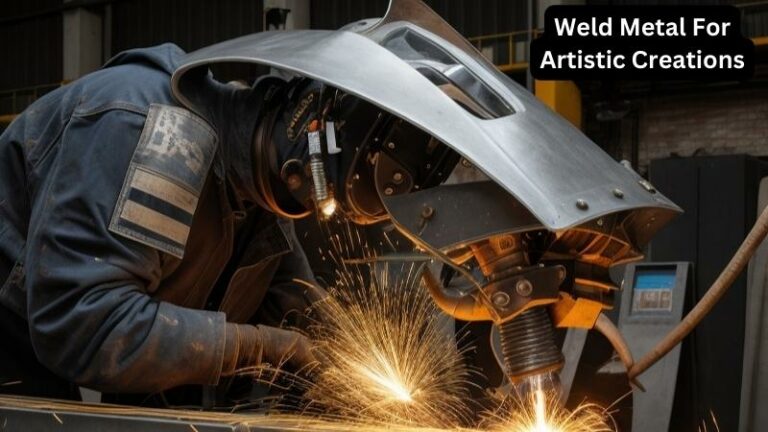How To Weld Metal Sheets
Today we discuss How To Weld Metal Sheets. Welding metal sheets is an essential skill for any aspiring metalworker or DIY enthusiast. Whether you aim to fabricate intricate metal sculptures or repair damaged equipment, mastering the art of welding can open up a world of possibilities.
In this guide, we will delve into the fundamental principles and techniques of welding metal sheets, providing you with the knowledge and confidence to tackle your own welding projects with precision and finesse.
From understanding the different types of welding processes to selecting the appropriate equipment and safety precautions, this comprehensive guide will take you on a journey through the fascinating world of metal sheet welding.
We will explore the step-by-step process of preparing metal sheets for welding, the nuances of different welding techniques such as MIG, TIG, and arc welding, and the best practices for achieving strong and aesthetically pleasing welds.
So, whether you are a beginner looking to dip your toes into the world of welding or a seasoned welder seeking to refine your skills, this guide will equip you with the necessary tools and knowledge to become a master of welding metal sheets.
How to Weld Metal Sheets:
- Prepare the metal sheets by cleaning the surfaces and removing any rust or paint.
- Set up your welding equipment, including a welding machine, appropriate electrodes, and safety gear.
- Connect the grounding clamp of the welding machine to the metal sheets.
- Hold the electrode at a slight angle and start welding from one end of the metal sheets.
- Move the electrode along the joint in a steady and controlled manner, ensuring proper penetration.
- Allow the welded joint to cool down before handling the metal sheets.
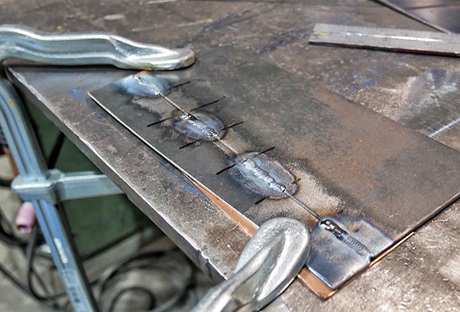
How To Weld Metal Sheets:
Step 1: Gather the Necessary Equipment
Before you start welding metal sheets, it’s essential to gather all the necessary equipment. Here’s a list of items you’ll need:
- Welding machine
- Welding helmet
- Welding gloves
- Safety goggles
- Protective clothing
- Wire brush
- Clamps
- Angle grinder
- Metal sheets
- Welding electrodes or wire
Make sure that you have all the necessary equipment in good working condition before proceeding to the next step.
Step 2: Prepare the Metal Sheets
Proper preparation of the metal sheets is crucial for a successful weld. Start by cleaning the surfaces that will be welded using a wire brush. This will remove any dirt, rust, or other contaminants that could affect the quality of the weld.
Next, ensure that the metal sheets are properly aligned and secured. Use clamps to hold them firmly in place, ensuring that there is no movement during the welding process. This will help you achieve accurate and precise welds.
Step 3: Set Up the Welding Machine
Now it’s time to set up your welding machine. Depending on the type of welding you’re doing, you may need to adjust various settings such as voltage, amperage, and wire feed speed. Consult the user manual for your specific machine to ensure you have the correct settings.
Additionally, don’t forget to put on your welding helmet, safety goggles, and gloves before starting the welding process. Safety should always be a top priority when working with hot metal and bright sparks.
Step 4: Start Welding
With everything set up, it’s time to start welding the metal sheets. Begin by striking an arc between the welding electrode or wire and the metal surface. Hold the electrode or wire at a slight angle and move it steadily along the joint, applying consistent pressure.
As you weld, ensure that the molten metal penetrates both sides of the joint, creating a strong bond. Proper technique and control are essential here. Take your time and maintain a steady pace to achieve even and smooth welds.
Step 5: Clean and Inspect the Weld
Once you have completed the welding, allow the metal sheets to cool down. Use an angle grinder or a wire brush to remove any slag or excess weld material. This will help ensure a clean and visually appealing finish.
After cleaning, carefully inspect the weld for any imperfections or defects that may compromise its integrity. Look for cracks, porosity, or incomplete fusion, and make any necessary repairs to achieve a strong and reliable weld.
Step 6: Practice and Refine Your Skills
Remember that welding is a skill that takes time and practice to master. The more you weld, the better you will become. Take the time to practice on scrap metal sheets before working on important projects to refine your technique and improve your welding skills.
Additionally, seek out resources such as books, and online tutorials, or even consider taking welding classes to further enhance your knowledge and abilities. Continuous learning and improvement will help you become a proficient welder.
Step 7: Safety Precautions
Finally, it’s crucial to prioritize safety when welding. Always work in a well-ventilated area or use proper ventilation equipment to avoid inhaling toxic fumes. Wear appropriate protective clothing and ensure that there are no flammable materials nearby.
Additionally, be mindful of your surroundings and keep a fire extinguisher nearby in case of emergencies. Remember to follow all safety guidelines and procedures outlined by your welding machine manufacturer and local regulations.
Step 8: Maintenance and Care
After completing your welding tasks, it’s essential to properly maintain and care for your equipment. Clean your welding machine regularly, inspect cables and connections for any damage, and replace any worn-out or faulty parts.
Store your equipment in a clean and dry area to prevent corrosion and damage. By taking good care of your welding machine, you’ll ensure its longevity and optimal performance for future welding projects.
Step 9: Seek Professional Guidance if Needed
If you encounter any difficulties or have questions about welding metal sheets, don’t hesitate to seek professional guidance. Consulting with experienced welders or professionals in the field can provide valuable insights and help you overcome any challenges you may face.
Remember, it’s always better to seek assistance and learn from those with expertise rather than risking mistakes or compromising the quality of your welds.
Step 10: Expand Your Welding Horizons
Now that you have learned the basics of welding metal sheets, why not explore other welding techniques and projects? From welding different types of metals to creating intricate designs, there’s a whole world of possibilities waiting for you to discover.
Continue to explore, experiment, and push the boundaries of your welding skills. With dedication and practice, you can become a versatile and accomplished welder who can tackle a wide range of welding projects.
Faqs How To Weld Metal Sheets:
Before welding metal sheets, it is important to properly prepare them to ensure a strong and durable weld. Start by cleaning the sheets to remove any dirt, grease, or rust using a wire brush or sandpaper.
Next, make sure the edges of the sheets are properly aligned and square. If necessary, use clamps or magnets to hold the sheets in place.
Finally, be sure to select the appropriate welding method and filler material based on the type and thickness of the metal sheets you are working with.
By taking the time to properly prepare the metal sheets, you will create a clean and secure welding surface, resulting in a stronger and more reliable weld.
Welding can be a hazardous process, so it is important to take proper safety precautions. Always wear appropriate protective gear, including a welding helmet, gloves, and a flame-resistant apron. Make sure you are working in a well-ventilated area to avoid inhaling harmful fumes.
Additionally, be aware of your surroundings and ensure there are no flammable materials nearby. It is also important to have a fire extinguisher readily available in case of emergencies.
Finally, be sure to follow all safety guidelines and procedures outlined by the specific welding equipment and materials you are using.
By prioritizing safety during the welding process, you can minimize the risk of accidents or injuries and ensure a safe working environment.
There are several welding techniques that can be used for metal sheets, depending on the type and thickness of the sheets. Some common techniques include:
– MIG (Metal Inert Gas) welding: This process uses a wire electrode and a shielding gas to create a strong and clean weld.
– TIG (Tungsten Inert Gas) welding: This technique uses a tungsten electrode and a shielding gas to produce high-quality and precise welds.
– Spot welding: This method is commonly used for thin metal sheets and involves applying pressure and an electrical current to create a localized weld.
It is important to select the appropriate welding technique based on the specific requirements of your project and the characteristics of the metal sheets you are working with.
When choosing a filler material for welding metal sheets, there are several factors to consider. Firstly, consider the type of metal you are working with.
Different metals require different filler materials to ensure a strong and compatible weld.
By carefully selecting the appropriate filler material, you can ensure a successful weld that provides optimal strength and durability.
To achieve a clean and aesthetically pleasing weld on metal sheets, it is important to pay attention to certain details.
Firstly, make sure the metal sheets are properly cleaned and free from any contaminants before welding. This will help prevent any defects or impurities in the weld.
Secondly, ensure that the weld is uniform and consistent, without any gaps or irregularities. This can be achieved by maintaining a steady welding speed and using the appropriate heat settings.
Finally, consider post-welding processes such as grinding or polishing to further enhance the appearance of the weld.

Source: ytimg.com
How To Weld Sheet Metal – Part 1 of 2 – Welding Sheet Metal Basics with Eastwood
conclusion:
learning how to weld metal sheets is a valuable skill that offers a world of opportunities. The process of welding may seem daunting at first, but with practice and dedication, anyone can master this craft. Whether you are a professional welder or a DIY enthusiast, the ability to join metal sheets opens doors to endless creative projects and career prospects.
As you embark on your welding journey, remember to prioritize safety and always follow proper procedures. Take the time to learn about the different types of welding techniques and equipment available, as this knowledge will empower you to tackle a wide array of projects.
And don’t forget, practice makes perfect; the more you weld, the more confident and skilled you will become. So, grab your welding helmet, ignite your passion for metalwork, and let the sparks fly as you embark on this exciting adventure of learning how to weld metal sheets in English!
